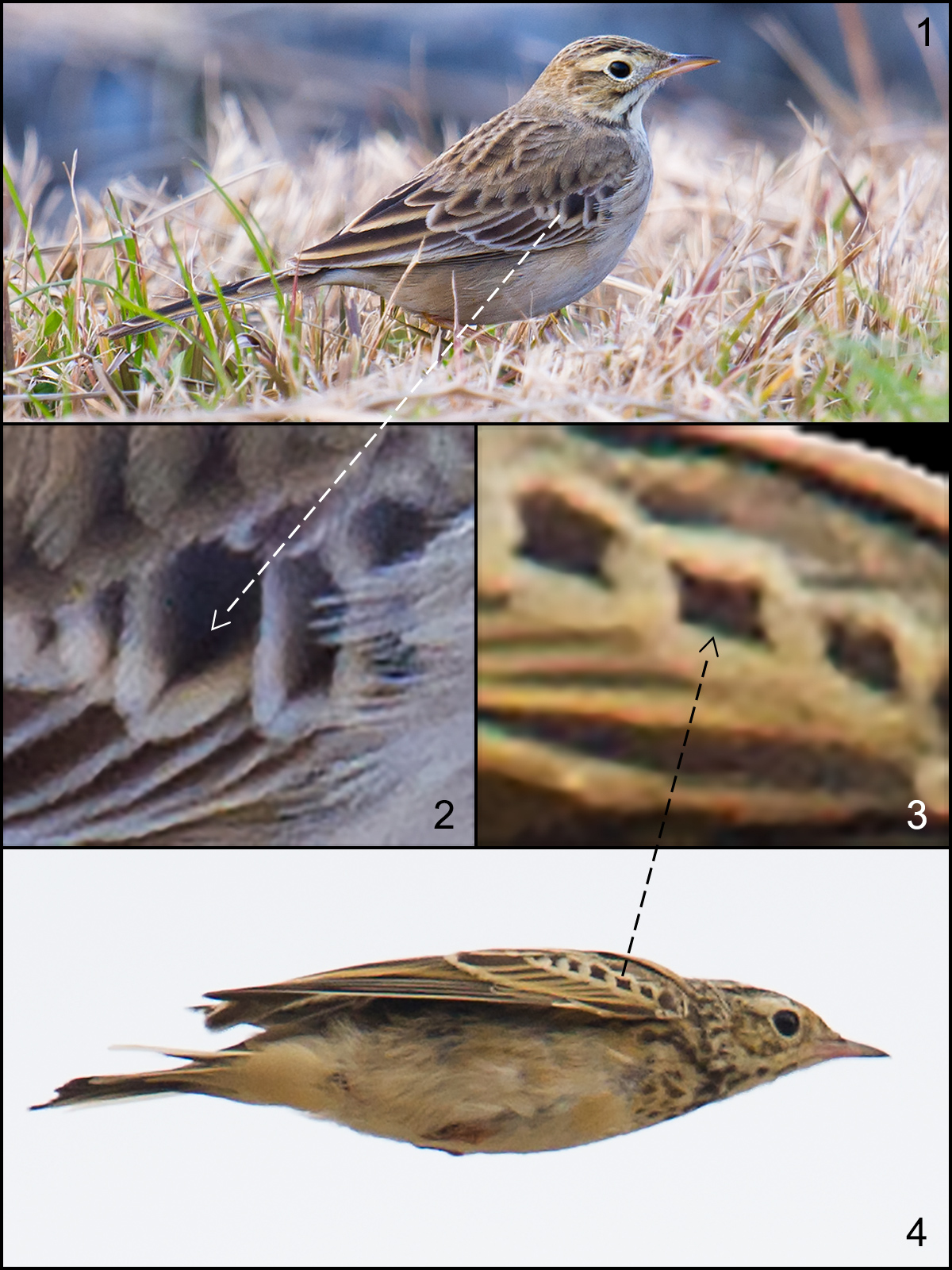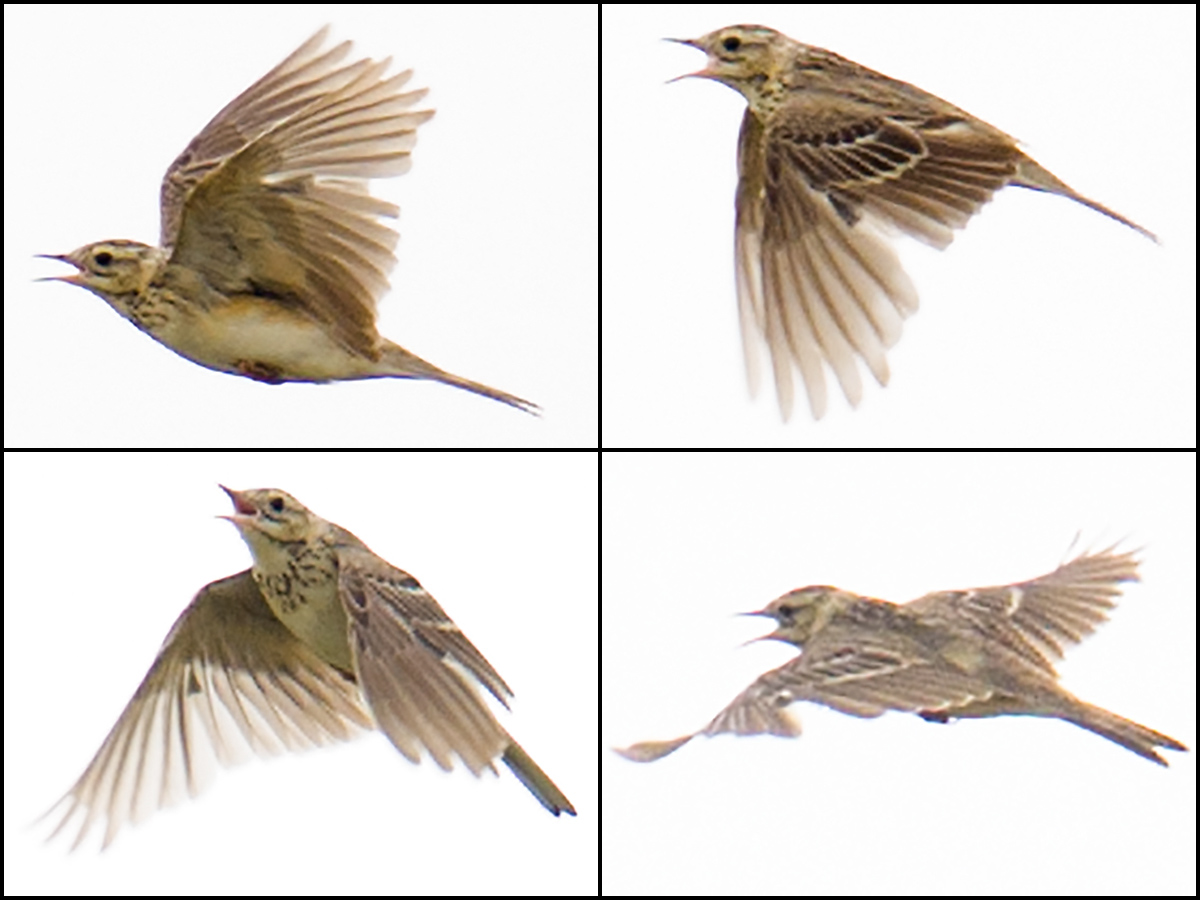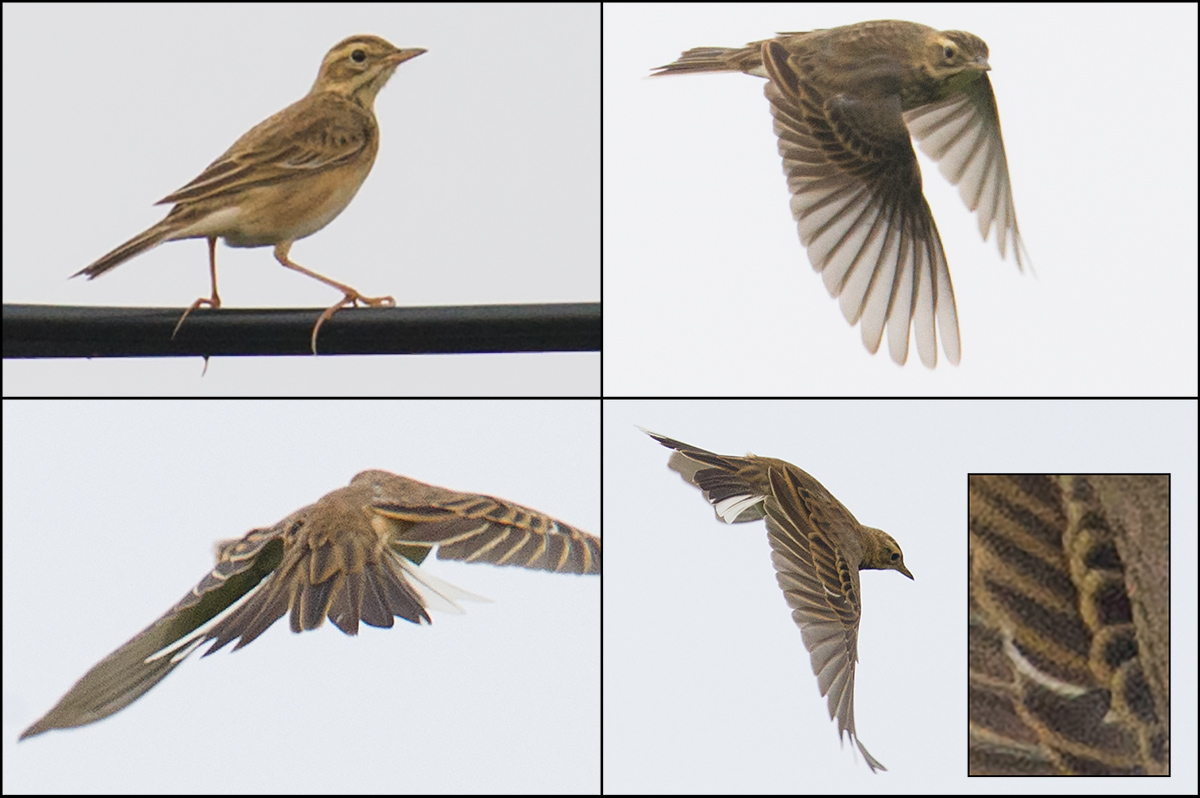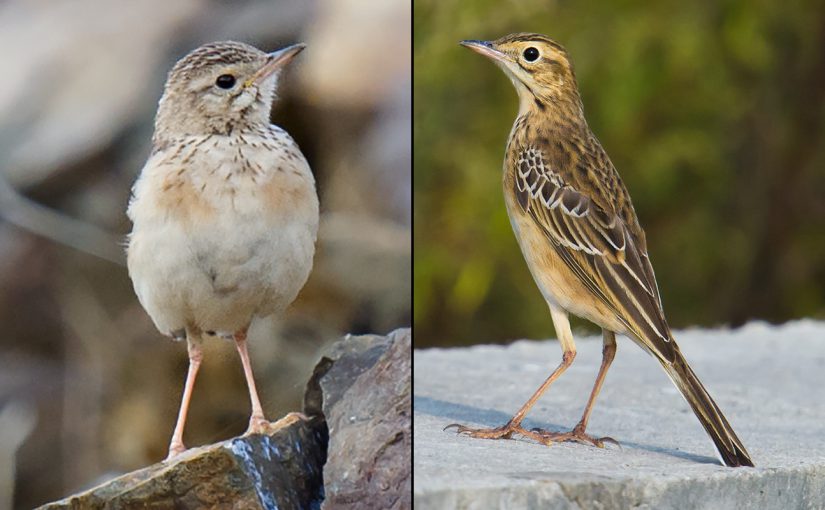by Craig Brelsford
Founder, shanghaibirding.com
With more and more birders operating in Shanghai, more and more vagrant birds are bound to be discovered. One possibility is Blyth’s Pipit Anthus godlewskii (photo above, L), a species similar to our familiar Richard’s Pipit A. richardi (R). Blyth’s breeds mainly in Mongolia, occurs on passage in central China, and winters mainly in India, so any records here would be of extralimitals. Let’s examine here how to separate the two pipits.

The key to getting a Blyth’s in Shanghai is paying attention to the many Richard’s Pipit that we see in the area. Anthus richardi is more or less a passage migrant in the Shanghai area and is recorded here regularly in spring and autumn. Some are present in winter; Elaine Du and I had a “sinensis” last week, the ID’ing of which led to this post.

Richard’s “sinensis” is very similar to Blyth’s, being best told by song, which is rarely heard in the Shanghai area. According to Per Alström et al., whose book Pipits and Wagtails is the authority on Palearctic and Nearctic pipits, the song of Blyth’s is “very characteristic and completely different from … Richard’s” (242). During a trip in July to the Inner Mongolian prefecture of Hulunbeier, one of the few places in China where Blyth’s breeds, I recorded the song.
Blyth’s Pipit Anthus godlewskii, flight song, near Hulun Lake (48.767866, 116.834183), Inner Mongolia, China, July, by Craig Brelsford (0:32; 2.1 MB)
The calls of the two species also differ, but less markedly. The flight call of Richard’s is a common bird sound in Shanghai during migration season. The call of Blyth’s is similar enough to “cause problems even for some veteran observers” (Alström et al. 244). For Shanghai birders, even those unfamiliar with Blyth’s, a “Richard’s” with a strange flight call is worth your attention. Listen for what Alström et al. describe as a call “less harsh, softer and more nasal” than Richard’s (244). For reference, review the flight call of Richard’s:
Richard’s Pipit, flight call, Dishui Lake, Shanghai, February (00:01; 852 KB)
Regarding plumage, the most reliable differentiator of Richard’s and Blyth’s is the pattern of the median coverts. In Blyth’s, a typical adult-type median covert will show well-defined, squarish black centers. In Richard’s, the adult-type median coverts are less clear-cut, rufous-tinged, and triangular. Note that the fresher the plumage, the more reliable this differentiator is.
Another less reliable criterion is structure. Shanghai birders will agree that the first impression a non-“sinensis” Richard’s usually gives is “large pipit.” Other pipits, such as Siberian Pipit, Red-throated Pipit, and Olive-backed Pipit, give a “small pipit” impression.

Alström et al. say, and I having seen Blyth’s can concur, that a birder viewing Blyth’s will get a “small pipit” impression: “The smaller size, lighter build and shorter tail,” the authors write, “are often most apparent in flight, when [Blyth’s] often recalls one of the smaller pipits rather than Richard’s.” Note also that the smaller size and shorter bill, tail, and hind claw of Blyth’s give that species a “better proportioned” look than the larger and heavier Richard’s (237).
The directions above should be seen as guidelines; individual Richard’s and Blyth’s may defy easy categorization, “sinensis” Richard’s even more so. Alström et al. caution against jumping the gun with your ID: “It is crucial to realise that in both species (especially Richard’s) appearance can vary considerably in one and the same individual depending on mood, weather, etc.,” they write. “Also, some Richard’s are structurally very like Blyth’s; this is especially true of southern Chinese Richard’s (‘sinensis’)” (237).
A record of Blyth’s Pipit in Shanghai would shoot to the top of the “Year’s Best” list. The stakes are high, so look diligently, and use caution. Good luck!
BIBLIOGRAPHY
Alström, Per, Krister Mild & Bill Zetterström. Pipits and Wagtails. Princeton University Press, 2003. This landmark book, co-authored by Shanghai Birding member Per Alström, is my first reference on all things Motacillidae.
Brazil, Mark. Birds of East Asia. Princeton University Press, 2009. Serviceable descriptions of Blyth’s Pipit and Richard’s Pipit. Illustration of “sinensis.”
Svensson, Lars & Killian Mullarney & Dan Zetterström. Collins Bird Guide, 2nd ed. HarperCollins, 1999-2009. Outstanding illustrations of Richard’s Pipit and Blyth’s Pipit by Mullarney.


